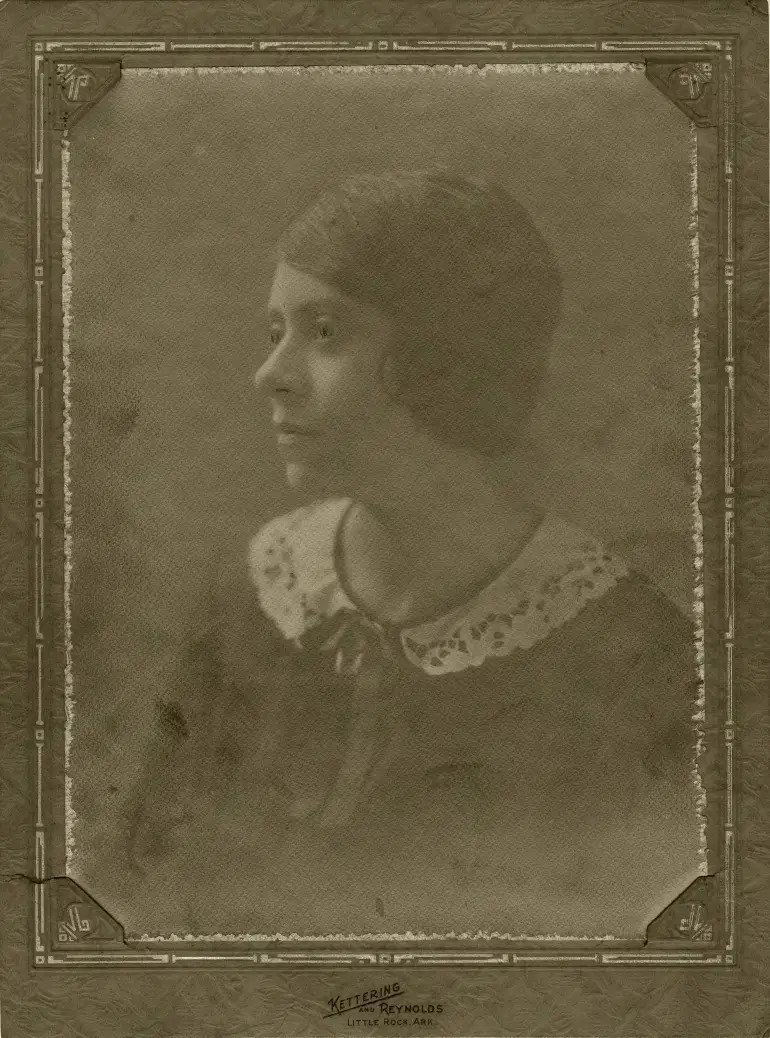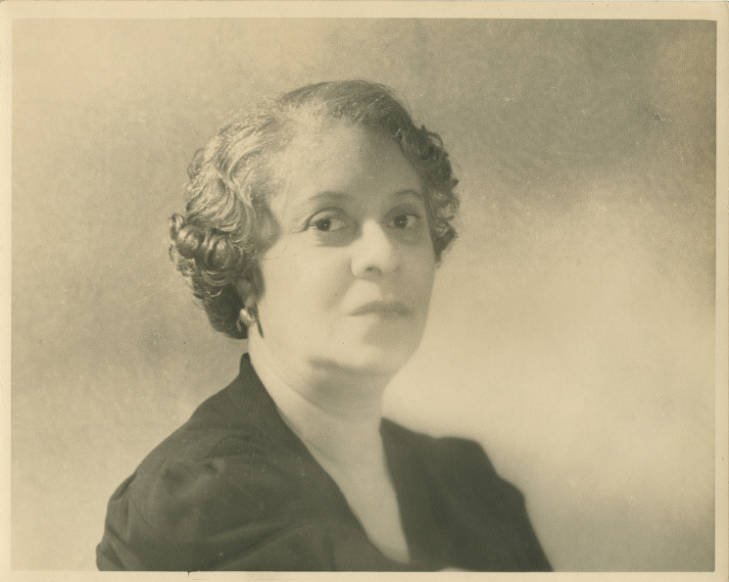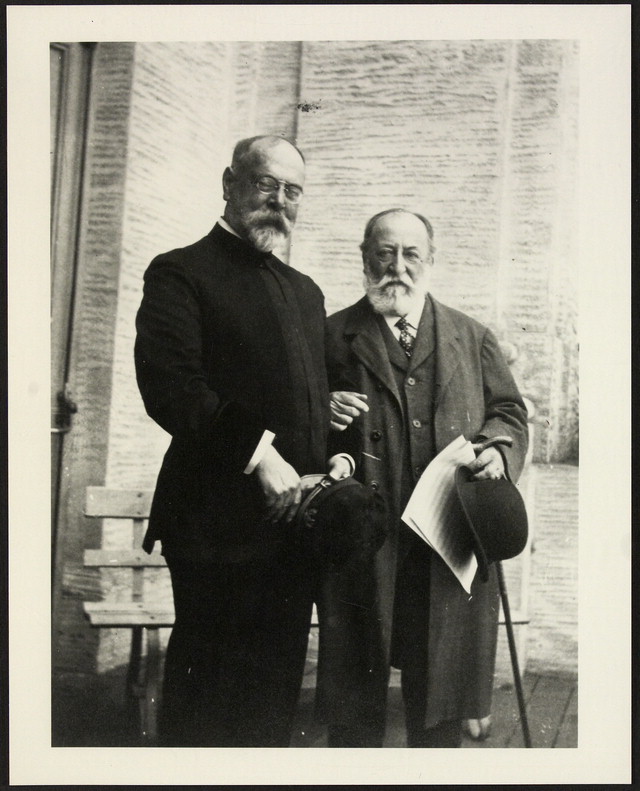Abels / arr. Martin:
UNBOUND
for wind ensemble
Difficulty: Medium-Advanced
Duration: circa 3 minutes, 30 seconds
Availability: PREMIERE JULY 2025
Boston University Tanglewood Institute Young Artists Wind Ensemble
David J. Martins, conductor
Adamo / ed. Martin:
Overture to LYSISTRATA
G. Schirmer/AMP Autograph Editions
for wind ensemble
Difficulty: Medium-Advanced
Duration: circa 4 minutes, 30 seconds
Availability: for Sale from Hal Leonard
Score and Parts: Click here
Score: Click here
Composer Note:
Every new piece is something of a reaction to the piece you wrote before. After the highly intimate and domestic drama that was my first opera, Little Women, I wanted to write something much more overtly theatrical; something that felt, both in timbre and character, brassier. Adapting my second opera from Lysistrata, Aristophanes’ indispensable comedy of sex and politics, gave me my opportunity. In its original scoring, this Overture to Lysistrata—drawn from its heroine’s first cabaletta, its second lady’s aria of longing, and the raucous finale of the first act— already saluted the wind orchestra, what with its two saxophones (alto and baritone) and lavish use of mallet percussion. But here, Peter Stanley Martin’s deft and artful arrangement perhaps expresses the character of the music even more eloquently than the orchestral version does.
— Mark Adamo
Antheil / arr. Martin:
ARCHIPELAGO (Rhumba)
for symphonic band
Difficulty: Medium-Advanced
Duration: circa 6 minutes
Availability: In preparation - contact MMMP for materials
Antheil’s Archipelago (Rhumba) from 1935 is almost a disconnected dance from a rhumba-generating machine - sometimes slipping in and out of gear. Antheil’s penchant for mechanics and invention are apparent in this composition which is full of flair and textural brilliance.
Antheil / arr. Martin:
HOT-TIME DANCE
for symphonic band
Difficulty: Medium-Advanced
Duration: circa 5 minutes
Availability: In preparation - contact MMMP for materials
Musical hijinks of the highest order are abundant in this joyful snapshot of yesteryear. From start to its uproarious finish, a performance of Hot-Time Dance will keep everyone’s toes tapping and ensembles on the edge of their seats. “Explanation: On big election nights, we boys used to collect all the loose lumber in the neighborhood, stack it in a big pile on the back lots, burn it in a huge bonfire, while we danced around it. This is traditional all over America. G. A.” (1948)
Barber / realized Martin:
FUNERAL MARCH (based on the Army Air Corps Song)
for concert band
Difficulty: Medium
Duration: circa 4 minutes
Availability: for Sale from Hal Leonard
Score and Parts: Click here
Score: Click here
This short funeral march for band was composed during Barber’s service in the United States Army Air Corps (now the United States Air Force). It was also during that time that he composed his Second Symphony as well as Commando March, which for 75 years has stood as Barber’s only original contribution to the wind band medium. Unique to Barber’s compositional output, the Funeral March exists only as an annotated short score manuscript. This authoritative realization of Barber’s second and final work for wind band will undoubtedly become a staple of the repertoire suited for concert performances as well as memorial and tribute services for our fallen heroes. A spectre-like fantasy on the Air Corps song is brilliantly crafted by the composer and includes a powerful statement of “Taps” by a solo trumpet “from the distance.”
Corigliano / arr. Martin:
LULLABY FOR NATALIE
for concert band
Difficulty: Medium
Duration: circa 5 minutes
State Lists: Indiana, Louisiana, Texas
Availability: for Sale from Hal Leonard
Score and Parts: Click here
Score: Click here
Originally composed for Anne Akiko Meyers and then orchestrated for Marin Alsop's 20th season at the Cabrillo Festival of Contemporary Music, this lovely lyric work was transcribed for band under the composer's supervision. Accessible to musicians and audiences, yet extremely sensitive with its dramatic sonorities, the music is both soothing and subtle even as the tonality is stretched.
Additional information and a digital perusal score are available here.
Corigliano / ed. Martin:
TRIATHLON
for saxophonist and wind ensemble
Difficulty: Professional
Duration: circa 30 minutes
Availability: On rental from the G. Schirmer Rental Library
Danielpour / ed. Martin:
TOWARD THE SPLENDID CITY
G. Schirmer/AMP Autograph Editions
for wind ensemble
Difficulty: Advanced
Duration: circa 8 minutes
State Lists: Alabama
Availability: for Sale from Hal Leonard
Score and Parts: Click here
Score: Click here
Composer Note:
While Toward the Splendid City was composed as a portrait of New York, the city in which I live, it was written almost entirely away from home. Work on the piece began in Seattle in the spring of 1992 and was completed in mid-August of that year...At the time I was nearing the end of a year-long residency with the Seattle Symphony, and had serious second thoughts about returning to New York. Life was always complicated in the city and easier, it seemed, everywhere else. I was, however, not without a certain pang of nostalgia for my home town, and as a result Toward the Splendid City was driven by my love-hate relationship with New York. It was, needless to say, a relationship badly in need of resolution.
It is also a portrait of the city at a time when New York may have been at its most vibrant. Part of what made New York feel so alive during (the 1980s and 1990s) was a sense of optimism that was felt by many of its citizens, and its landmarks (the New York skyline, Central Park, Yankee Stadium, Fifth Avenue) were, and to some extent still are, visual manifestations of that optimism. Since 9/11, and following some of the financial challenges that the country has been wrestling with, this sense of optimism has faded somewhat, but the energy still remains. May this new edition continue to reawaken the sense of optimism that we all want to experience now or at any time.
— Richard Danielpour
Additional information and a digital perusal score are available here.
Dawson / arr. Martin:
NEGRO FOLK SYMPHONY
for wind orchestra
Difficulty: Professional
Duration: circa 35 minutes: The Bond of Africa - 13’; Hope in the Night - 13’; O, Le’ Me Shine, Shine Like a Morning Star! - 9’
Availability: IN PREPARATION
Premiere: TBD
Guðnadóttir / arr. Martin:
Fólk fær andlit
(People Get Faces)
for SSAA, SATB, or TTBB chorus with violoncello drone
Difficulty: Medium
Duration: circa 5 minutes
Availability: for Sale from Hal Leonard
SSAA chorus and violoncello drone: Click here
SATB chorus and violoncello drone: Click here
TTBB chorus and violoncello drone: In production
Composer Note:
In December 2015 we followed a series of events that touched most of us there: Albanian children with terminal illnesses were deported from Iceland along with their families who had been denied residence permits. It was deeply distressing to watch the series of events unfold; how people divided into two separate oppositions, for or against - people.
— Hildur Guðnadóttir
Guðnadóttir / arr. Martin:
Fólk fær andlit
(People Get Faces)
for string orchestra
Difficulty: Medium
Duration: circa 5 minutes
Availability: On rental from the G. Schirmer Rental Library
This work may be performed as a large chamber ensemble with a minimum of 11 strings (4 violins, 3 violas, 3 violoncellos, 1 contrabass) or with a full string orchestra. The “Cantus Ensemble” consists of a string trio (violin, viola, violoncello) which may be doubled to reach optimal balance with the rest of the orchestra.
Originally composed for voices, there were only two words/phrases repeated throughout the composition: The Cantus Ensemble repeated the Icelandic word miskun (English translation: mercy) while the remainder of the ensemble repeated different iterations and embellishments of the phrase Fyrirgefið okkur fyrir which translates as “forgive us for”.
Additional information and a digital perusal score are available here.
Harbison / ed. Martin:
RUBIES
(after Thelonious Monk's Ruby, My Dear)
G. Schirmer/AMP Autograph Editions
for symphonic band
Difficulty: Medium-Advanced
Duration: circa 5 minutes
State Lists: Pennsylvania, Tennessee
Availability: for Sale from Hal Leonard
Score and Parts: Click here
Score: Click here
Composer Note:
Rubies is a version of Thelonious Monk’s Ruby My Dear, which he composed while still in his teens. When I was invited by the Seattle Symphony to make a short piece reflecting my first musical passions my thoughts were of Bach and Monk. Since I had recently made some Bach-like chorale preludes, I chose to make a version of Monk’s tune, first in a chamber-musical, contrapuntal manner, then in the grand orchestral style I had always heard lurking there.
— John Harbison
Additional information and a digital perusal score are available here.
Kernis / ed. Martin:
NEW ERA DANCE
G. Schirmer/AMP Autograph Editions
for wind ensemble
Difficulty: Professional
Duration: circa 8 minutes
Availability:
Score: for sale from Hal Leonard: Click here
Set of Parts: On rental from the G. Schirmer Rental Library
New Era Dance was written in the summer of 1992: immediately following the Los Angeles riots. It is a "multi-layered, virtuosic work...that is larger than life. The composer drew upon the pulsing, rhythmic music that blares on the streets of his neighborhood, the Washington Heights section of NYC: Latin salsa, street rap, gypsy-camp folk, Disco and 50s jazz are also added to the tumultuous mix...an explosion of New York exuberance." (The Times)
Additional information and a digital perusal score are available here.
Matteis / arr. Martin:
DIVERSE BIZZARRIE SOPRA LA VECCHIA SARABANDA O PUR CIACCONA
("Diverse Caprices on the Old Sarabande or Chaconne")
for solo harp
Difficulty: Medium-Advanced
Duration: circa 7 minutes
Availability: for Sale from Mad Monk Music Press
$15.00
*Free Shipping! Use code HARPSHIP at checkout.*
An elaborate set of variations on a traditional four-measure repeating harmonic pattern.
Courtesy of the University of Arkansas Archives
Price / arr. Martin:
FIVE FOLKSONGS IN COUNTERPOINT
for string orchestra
Difficulty: Advanced
Duration: circa 18 minutes
Availability: On rental from the G. Schirmer Rental Library
Composer Note
No. 1 is based upon the Negro spiritual “Calvary.” (Southern USA)
No. 2 is based upon “Clementine,” a ballad which became a favorite during the Reconciliation period. It was popular in San Francisco, California near the end of the 19th century and is often sung now-a-days by college and community groups.
No. 3 “Drink To Me Only With Thine Eyes” was sung by settlers on the Eastern coast of America before the days of the American Revolution…the words of which were written by Ben Johnson in 1616 and sung to a tune of unknown origin as early as 1770, included in this group is now regarded as a folk song, and is authoritatively included in published volumes of folk songs.
No. 4 Several folk songs
No. 5 “Swing Low Sweet Chariot.” Well-known and one of the best-loved of American Negro folk tunes.
— Florence B. Price
Courtesy of the University of Arkansas Archives
Price / arr. Martin:
NEGRO FOLK SONGS IN COUNTERPOINT
for string orchestra
Difficulty: Advanced
Duration: circa 10 minutes
Availability: On rental from the G. Schirmer Rental Library
Movements:
Go Down, Moses
Somebody’s Knockin’ At Yo’ Do’
Little David, Play On Yo’ Harp
Joshua Fit de Battle ob Jericho
Price / ed. & arr. Martin:
PIANO QUINTET No. 1 (Quinet in A Minor)
for piano and strings or piano and string orchestra
Difficulty: Advanced
Duration: circa 30 minutes
Availability:
Piano Quintet Score: for Sale from Subito Music
Piano Quintet Parts: for Sale from Subito Music
Piano and string orchestra: On rental from Subito Music
The present edition of Price’s Quintet in A Minor for piano and strings not only takes into account extant copies of her final, revised manuscript and previously published editions, but also draws from early drafts/versions where consulting the complete source materials and gestation of the work corrects many inconsistencies and inaccuracies present in previous editions. No single source can be declared definitive when working with the sketches, manuscripts, revisions, and fair copies of her compositional output. What became of integral importance in the creation of this publication was the discovery of the original version of the score and parts to the Quintet where Price utilized a heretofore unknown pseudonym — “Forest Firewood.”
In honor of the legacy of Florence Price, a donation will be made in Florence Price’s name/memory to the National Action Network (nationalactionnetwork.net) for each sale and rental of the piano quintet and piano and string orchestra editions of the Quintet.
——————————————————————————————
Price / arr. Martin:
PIANO QUINTET No. 2
for piano and string orchestra
Difficulty: Advanced
Duration: circa 11 minutes
Availability: On rental from the G. Schirmer Rental Library
This is an arrangement/adaptation of Price’s Piano Quintet No. 2 for piano and string orchestra (2023). A digital perusal score is available at the above link.
Courtesy of the University of Arkansas Archives
Price / arr. Martin:
STRING SYMPHONY in G MAJOR
(after String Quartet No. 1)
Available as an entire symphony or individual movements
Difficulty: Advanced
Full Symphony (15’): On rental from the G. Schirmer Rental Library
I. Allegro (8’): On rental from the G. Schirmer Rental Library
II. Andante Moderato (7’): On rental from the G. Schirmer Rental Library
These are arrangements/adaptations of Price’s String Quartet (1929) for string orchestra (2023). Additional information and digital perusal scores are available at the above links.
Price / arr. Martin:
STRING SYMPHONY in A MINOR
(after String Quartet No. 2)
Available as an entire symphony or individual movements
Difficulty: Advanced
Full Symphony (30’): On rental from the G. Schirmer Rental Library
I. Moderato (12’): On rental from the G. Schirmer Rental Library
II. Andante Cantabile (6’30”): On rental from the G. Schirmer Rental Library
III. Juba (5’): On rental from the G. Schirmer Rental Library
IV. Finale (6’): On rental from the G. Schirmer Rental Library
These are arrangements/adaptations of Price’s String Quartet No. 2 (1935) for string orchestra (2023). Additional information and digital perusal scores are available at the above links.
Courtesy of the University of Arkansas Archives
Saint-Saëns / ed. and arr. Martin:
"Finale" to HAIL! CALIFORNIA
Centennial Performing Edition
for symphonic band
Difficulty: Medium-Advanced
Duration: circa 6 minutes
State Lists: Alabama, Georgia, Indiana, Kentucky, Maryland, North Carolina, Pennsylvania, Tennessee
Availability: for Sale from Mad Monk Music Press
The Centennial Performing Edition incorporates all of the original music for wind band that Saint-Saëns composed in the ending section of Hail! California now edited for contemporary wind bands, as well as including the orchestral material, now arranged for band, into one comprehensive performing edition. Of significant interest, the full score manuscript also includes Saint-Saëns's orchestration of the two organ interludes if an organ was not available – or possibly if technical difficulties occurred, like at the premiere in 1915.
Previously, Saint-Saëns had composed three known works for band: Orient et occident (1869), Hymne franco-espagnol (1900), and Sur les boards du Nil (1908). With the “Finale” to the massive Hail! California, he in essence composed another work for band, this time featuring the band with orchestral accompaniment and interplay, as well as serving as a politically-charged composition: What Saint-Saëns composed for the Exposition was a work that attempted to unite France and the United States. What better way to make a statement of the French and Americans joining forces – musically and politically – than incorporating the national anthems of the two countries into his composition for the Exposition? Thus, “La Marseillaise” and “The Star-Spangled Banner” are masterfully woven together in the “Finale” of Hail! California. While the music of Hail! California is most certainly French-inspired and characteristic of Saint-Saëns's oeuvre, the use of “The Star-Spangled Banner” and the employment of the Sousa Band at the premiere lent a distinct American quality in both musical and extra-musical ways.
Tan Dun / ed. Martin:
INTERNET SYMPHONY "Eroica"
G. Schirmer/AMP Autograph Editions
for symphonic band
Difficulty: Medium-Advanced
Duration: circa 5 minutes
State Lists: Alabama, Kentucky, Pennsylvania, Tennessee
Availability: for Sale from Hal Leonard
Score and Parts: Click here
Score: Click here
Program Note:
In 2008, Google and YouTube commissioned Academy Award winner (“Crouching Tiger, Hidden Dragon”) and UNESCO Goodwill Ambassador Tan Dun to compose a new work Internet Symphony “Eroica” as part of the inaugural YouTube Symphony Orchestra project. Musicians from around the world were invited to audition by submitting videos of their interpretations of the Internet Symphony to be judged by members of leading international orchestras. There were more than 3,000 auditions from more than 70 countries. The project culminated in a performance at Carnegie Hall on April 15, 2009, that was webcast and is still available on YouTube. More than 22 million people from 200 countries on six continents have experienced Tan Dun's feeling of a global music community which is encapsulated in his Internet Symphony “Eroica”.
In the words of Tan Dun: "The Internet is an invisible Silk Road, joining different cultures from around the world. East or West, North or South, and this project has created a classical music phenomenon, bringing together musical heroes from all corners of the globe. When I was conceiving this work it was during the China Olympics. On the streets of New York, London, Beijing, Shanghai, I heard the noise of people cheering and moving around beautifully. I was passing by an automotive garage and I found three brake drums from different automobiles - these car parts - and it was a beautiful sound...and I realized this is the spirit of the young. This is the spirit of today."
Additional information and a digital perusal score are available here.



















